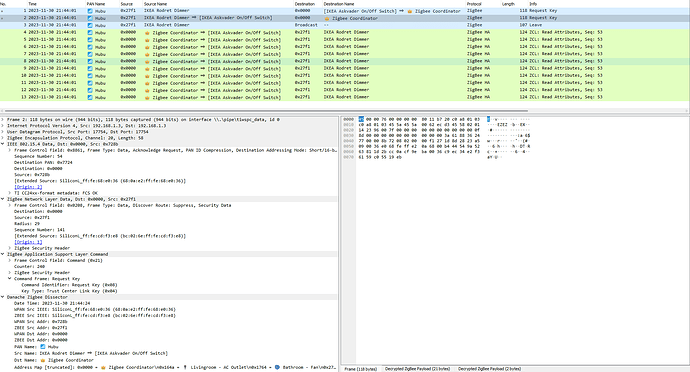I've be playing with frame capture for 2 hours using E1810 (same as your E1524) and E2201 (new Rodret remote) pairing close to the hub and via a router and came up to this conclusions:
-
When paired directly to the hub, Hubitat responds to the "Request Key" command with a "Transport Key" command. Upon receiving the Trust Center Link Key, the device verifies the key then broadcasts "Permit Join Request". Physically, the device blinks twice, then the light turns off. Pairing time is very short.
-
When paired using a router, Hubitat does not respond to the "Request Key" command. The last 4 lines in the screenshot above do not appear in the logs. Physically, the devices keep the little light on for a much longer time, no blinking twice at the end of the pairing process.
-
The E1810 ignores the failure to receive the Trust Center Link Key and goes on like nothing happened (this is nice). Newer IKEA models respond to the lack of the "Transport Key" command from the hub by broadcasting the "Leave" command. HE ignores this "Leave" command and thinks the device paired successfully (I have a lot of "Unknown" devices in my Zigbee Graph because of this)
In the screenshot above, we can see that the "Request Key" issued by the Rodret reaches the Coordinator via the router (IKEA Askvader On/Off Switch), Coordinator ignores it like a boss, and this makes the Rodret broadcast the "Leave" command (Elvis has left the building). Moments later, the Coordinator is asking the Rodret for some attribute, like nothing happened but the device is no longer paired to the mesh.



